Contents
Guide
Page List
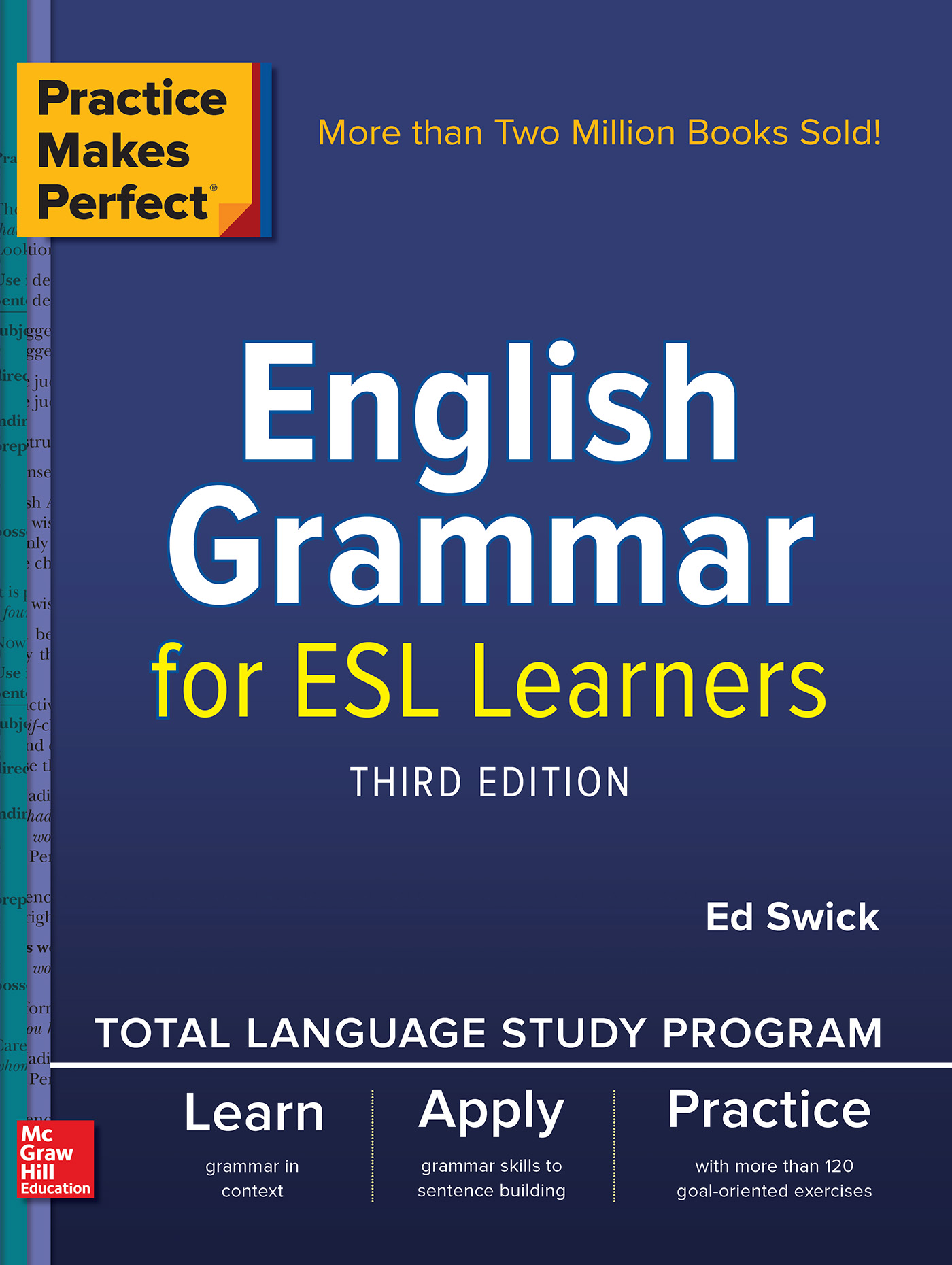

Copyright 2018 by McGraw-Hill Education. All rights reserved. Except as permitted under the Copyright Act of 1976, no part of this publication may be reproduced or distributed in any form or by any means, or stored in a database or retrieval system, without the prior written permission of publisher. ISBN: 978-1-26-012094-3
MHID: 1-26-012094-5 The material in this eBook also appears in the print version of this title: ISBN: 978-1-26-012093-6,
MHID: 1-26-012093-7. eBook conversion by codeMantra
Version 1.0 All trademarks are trademarks of their respective owners. Rather than put a trademark symbol after every occurrence of a trademarked name, we use names in an editorial fashion only, and to the benefit of the trademark owner, with no intention of infringement of the trademark.
Where such designations appear in this book, they have been printed with initial caps. McGraw-Hill Education ebooks are available at special quantity discounts to use as premiums and sales promotions or for use in corporate training programs. To contact a representative, please visit the Contact Us page at www.mhprofessional.com. McGraw-Hill Language Lab App Interactive quizzes are available to support your study of this book. Go to www.mhlanguagelab.com to access the online version of this application or to locate links to the mobile app for iOS and Android devices. Alternatively, search McGraw-Hill Education Language Lab in the iTunes app store or Google Play store.
TERMS OF USE This is a copyrighted work and McGraw-Hill Education and its licensors reserve all rights in and to the work. Use of this work is subject to these terms. Except as permitted under the Copyright Act of 1976 and the right to store and retrieve one copy of the work, you may not decompile, disassemble, reverse engineer, reproduce, modify, create derivative works based upon, transmit, distribute, disseminate, sell, publish or sublicense the work or any part of it without McGraw-Hill Educations prior consent. You may use the work for your own noncommercial and personal use; any other use of the work is strictly prohibited. Your right to use the work may be terminated if you fail to comply with these terms. THE WORK IS PROVIDED AS IS.
McGRAW-HILL EDUCATION AND ITS LICENSORS MAKE NO GUARANTEES OR WARRANTIES AS TO THE ACCURACY, ADEQUACY OR COMPLETENESS OF OR RESULTS TO BE OBTAINED FROM USING THE WORK, INCLUDING ANY INFORMATION THAT CAN BE ACCESSED THROUGH THE WORK VIA HYPERLINK OR OTHERWISE, AND EXPRESSLY DISCLAIM ANY WARRANTY, EXPRESS OR IMPLIED, INCLUDING BUT NOT LIMITED TO IMPLIED WARRANTIES OF MERCHANTABILITY OR FITNESS FOR A PARTICULAR PURPOSE. McGraw-Hill Education and its licensors do not warrant or guarantee that the functions contained in the work will meet your requirements or that its operation will be uninterrupted or error free. Neither McGraw-Hill Education nor its licensors shall be liable to you or anyone else for any inaccuracy, error or omission, regardless of cause, in the work or for any damages resulting therefrom. McGraw-Hill Education has no responsibility for the content of any information accessed through the work. Under no circumstances shall McGraw-Hill Education and/or its licensors be liable for any indirect, incidental, special, punitive, consequential or similar damages that result from the use of or inability to use the work, even if any of them has been advised of the possibility of such damages.
Contents
Introduction
Many people consider learning grammar a chore.
Contents
Introduction
Many people consider learning grammar a chore.
And at times, it can be. But understanding the grammar of any language is essential for becoming a skilled and accurate user of that language. English is certainly no exception. The rules of grammar for a language learner are like the rules of the road for a driver. In order to be able to drive properly and maneuver with other drivers, you have to know the rules that everyone goes by. Naturally, some people break the rules and make driving difficult for other drivers.
This is true of language, too. If you follow the rules of grammar, you can express yourself clearly. But if you fail to observe those rules, people may find it difficult to understand you or they may even misunderstand you entirely. So its really very important to understand and use correct grammar. But what is grammar? Funk and Wagnallss New College Standard Dictionary describes grammar as a type of science that explains the various principles of oral or written usage of a particular language. It is also said to be the developed art of speaking or writing accurately in a particular language.
Whether science or art, grammar is made up of the descriptions that tell you how to use a language correctly. For example: Description: Begin a sentence with do to change a statement to a question. Usage: Statement = You understand the problem.
Question = Do you understand the problem? Or: Description: Use he as the subject of a sentence; use him as the direct object. Usage: Subject = He is a good friend of mine.
Direct Object = I visit him very often. There are many such grammatical descriptions, and each one is a building block in the structure of your knowledge of how to form and use English correctly. Standard grammar is composed of the traditional rules for English. Standard grammar is composed of the traditional rules for English.
It is what grammarians and English professors want everyone to use when they speak and write. But a language evolves over time, and the traditional rules sometimes seem out of step with what is going on in the English-speaking world. The more current or popular usages can be called casual language. Thats what people really say in their everyday lives and is often in direct contradiction with standard grammar. As an illustration, in standard grammar you should use who as the subject of a sentence and use whom when it is used as an object. But thats not always the case in casual language.
For example: Standard grammar:Whom did you visit in New York? Casual language:Who did you visit in New York? Although the first example is considered better grammatically, the second example sentence is the most commonly used. Another kind of example involves the verb to dive. Its past tense is either regular (dived) or irregular (dove). What is the difference? Essentially, none. Both forms are used correctly as the past tense. But English is evolving.
Things are changing. And the English-speaking world is deciding whether it wants the past tense of the verb to dive to be regular or irregular. It may take quite a while longer to learn what that decision will be. So for the time being youll continue to hear both dived and dove in the past tense. There is a similar case with the verb to prove. Nowadays, many people use proved as the participle in a perfect tense: He has proved or We had not proved.
But there are others who still use the archaic form (proven), which today is generally accepted as an adjective, in place of proved: He has proven or We had not proven. The point here is that grammar rules will guide you toward speaking and writing better English. But many rules of grammar are broken by certain casual or popular usages and still others become unclear because the language is in a state of transition. Where these deviations occur, they will be discussed in this book, because if English learners only know that


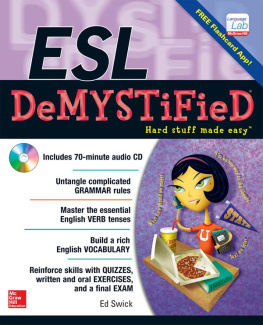
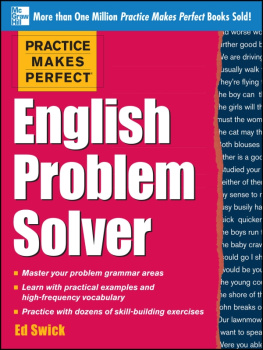

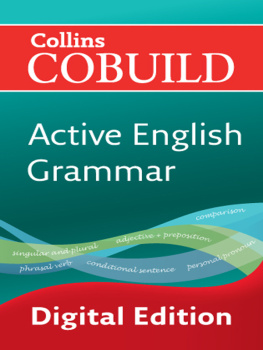
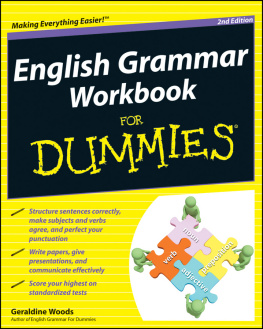

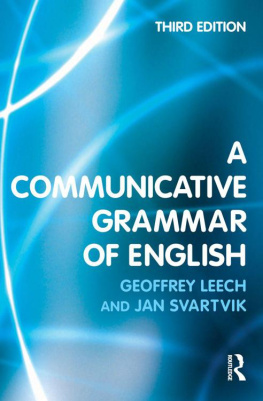

 Copyright 2018 by McGraw-Hill Education. All rights reserved. Except as permitted under the Copyright Act of 1976, no part of this publication may be reproduced or distributed in any form or by any means, or stored in a database or retrieval system, without the prior written permission of publisher. ISBN: 978-1-26-012094-3
Copyright 2018 by McGraw-Hill Education. All rights reserved. Except as permitted under the Copyright Act of 1976, no part of this publication may be reproduced or distributed in any form or by any means, or stored in a database or retrieval system, without the prior written permission of publisher. ISBN: 978-1-26-012094-3